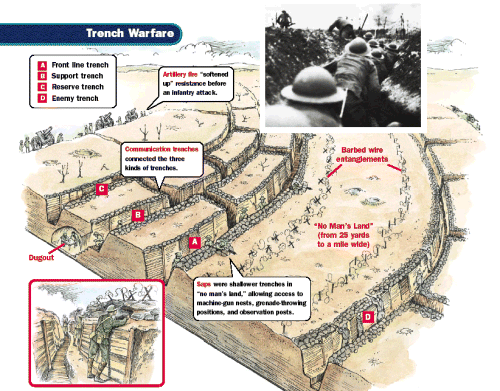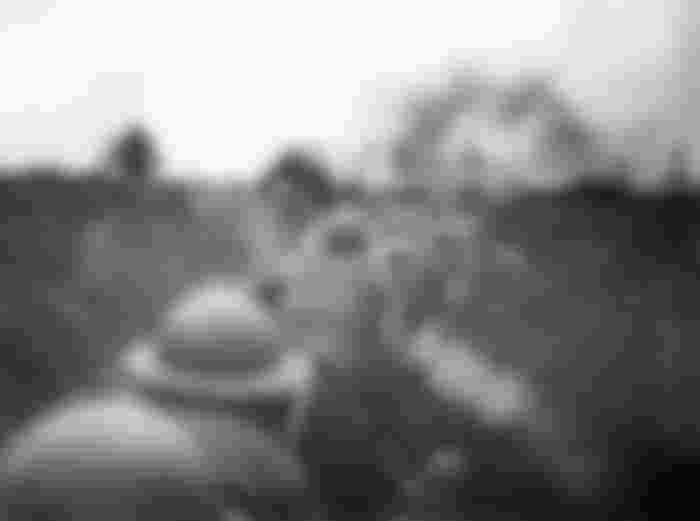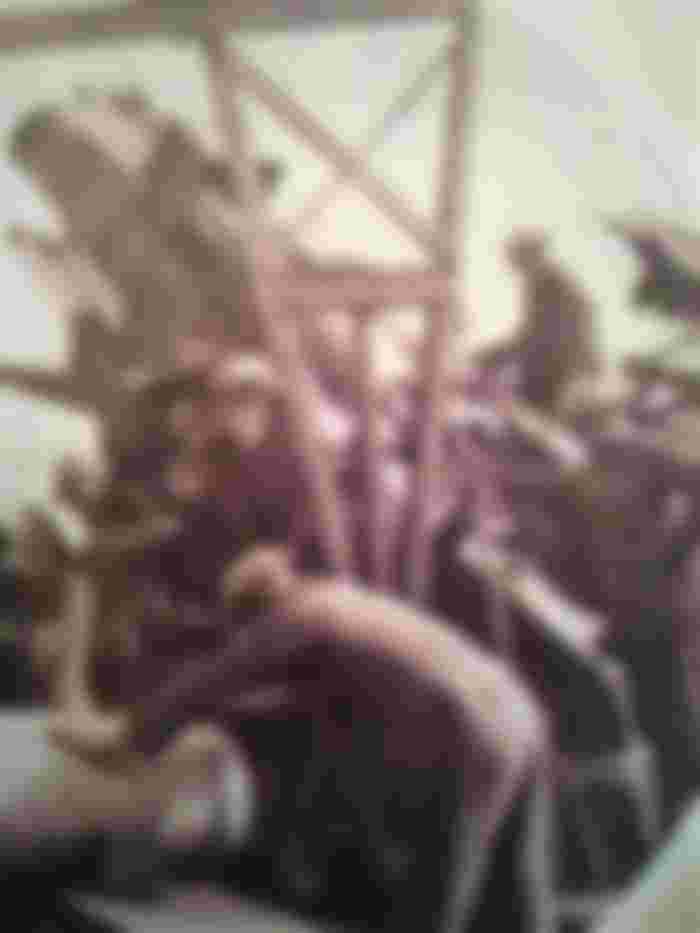Tranches played an important role in the First World War. Here we can see how they looked at like on the battlefield.

Aldo the trenches are probably as old as war in some form, we should definitely fall first when they mentioned First World War. Trench warfare was especially pronounced on Western Front. The condition of struggle led to creation of a whole system of trenches, which usually went in zigzag pattern, which had a very practical purpose. It protected against grenade. If the enemy accidentally manages to conquer one part of of the trench, it is much harder for him to advance if he does not know what awaits him around the first corner.

However, the trouble was that even the defenders often didn't know what and who was around that corner. Did the enemy strike group that invaded during night, cleaned a part of the trench and now, with drawn bayonets, wait for a careless change of guard? Or just sleeping comrades-in-arms, with one unfortunate man who happened to be on guard. And in order to prevent this to some extent, kilometers and kilometers of barbed wire, sown minefields, camouflaged pits, and everything that could prevent the enemy from approaching were spent. Soldiers spent months in trenches and dugouts, and raids often turned into slaughterhouses.

One of the first trench battles in First World War was on Guchevo, which was fought from the second half of September until November 1914, as part of the battle on river Drina. Know as the "Battle of the Clouds", it was fought at a short distance. In some places, Serbian and Austro-Hungarian trenches almost touched, only five meters away. The reason was that Austro-Hungarian artillery was completely superior, and this was one of the ways to annual that advantage, since grenades were falling on soldiers in blue uniforms as well.

The assaults were daily, the position passing from hand to hand several times. Despite the great losses, and the fact that it was forced to withdraw, the Serbian army achieved its goal. The Austro-Hungarians were prevented from breaking through the middle of the battlefield and encircling the Serbian wings. The enemy was detained at these elevations for almost two months.

Some details related to the trenches:
Metal roof
In some trenches, soldier set up a corrugated iron roof to protect them from the weather. By the way, it could also protect from pieces of land that necessarily bury the trenches after the artillery fire.
Shooter
The solder took turns at the position for two hours. During that time, they had to open four eyes and constantly observe the enemy.
Brackets
Sandboxes were used as shelter, but also as support for a riffle.
Platform
Build of planks, it allowed soldiers to reach the edge of the trench, usually slightly higher that the average man. This made it impossible for the enemy to see what was happening in the trench from afar, and kept the soldier of average height.
Artillery position
Artillery guns were operating from this part of the front, as well as soldiers in the reserve. These positions were in the deep background.
Supply line
The path used to haul supplies and new units. The wounded were taken away and killed.
Barbed wire barriers
They stopped numerous assaulting marches and cost the lives of many. When they tried to cross them, they were perfect target.
Trees
At the beginning of the war, trees meant some kind of protection. It was quickly realized that, so high, it was an excellent landmark for artillery fire, so it was cut for timber.
No man's land
The area between the trenches sown with mines and crossing it meant exposure to enemy fire and almost certain death,
Aerial reconnaissance
For the first time in the history of warfare, aviation was used, mainly for reconnaissance. However, low speed of the plane made them targets for those in the trench.
First line
The most dangerous trench was the first line of defense, as well as the starting position for each of the numerous assaults.
Second line
In a trench about 75 meters from the first line, there were soldiers assigned to come to the rescue in case of an attack. If the first line of trenches fell, people in the second were expected to stop the attack.
Reserve position
This trench was located about 300 meters behind the first line, where the soldiers spent the last hours before they were ordered to go straight to the line.
Literature: Politica's Entertainer, number 3590
Lead image: https://spartacus-educational.com/FWWtrenchsystem.jpg





That it has been known since the First World War, now depends on everyone, someone applies in the war, someone does not. By the way, there are a lot of new weapons now, now they just fire.